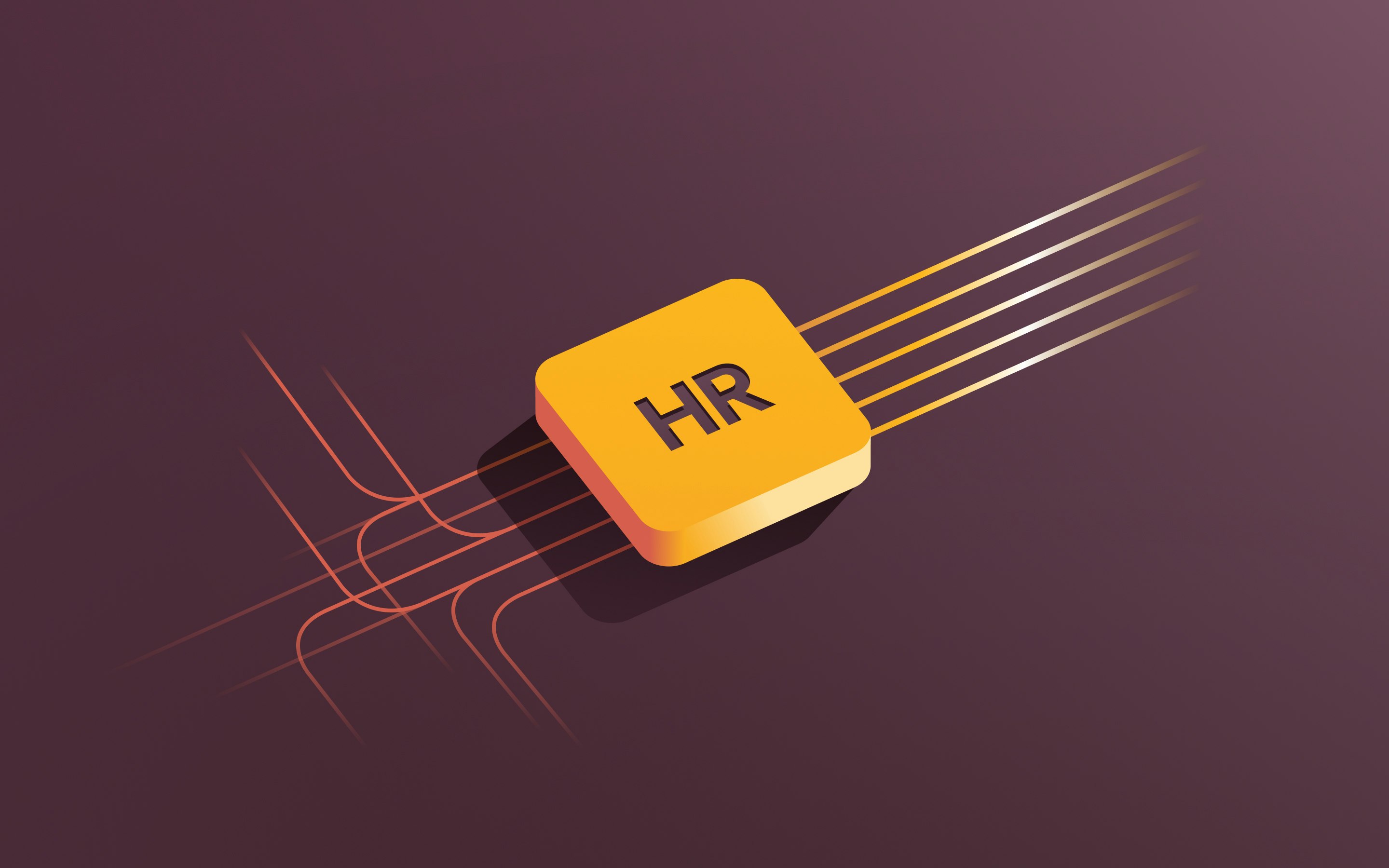Short-term disability: How it works and qualifications

Imagine an employee who faces a sudden medical issue that prevents them from working for several weeks. Without a safety net, this scenario can lead to financial stress for both the employee and the employer. Short-term disability insurance provides the safety net, bridging the gap between unforeseen health challenges and financial stability.
For HR managers and other leaders, leveraging short-term disability isn't just about compliance—it's a strategic move to manage health risks and promote workplace productivity. Offering short-term disability as a benefit can make your company more appealing to potential new hires, helping you attract and retain top talent—all while boosting employee satisfaction.
Do you know how short-term disability insurance works? What does short-term disability cover? How can short-term disability benefits transform your organization's approach to employee well-being? We’ll cover all that and more in this guide.
What is short-term disability insurance?
Short-term disability insurance is a benefit program that provides employees with a portion of their income if they are temporarily unable to work due to a non-work-related illness or injury. This type of insurance policy typically covers conditions like surgeries, injuries from accidents, or illnesses that require a brief recovery period.
For employers, offering short-term disability insurance is a strategic move that can help ensure workforce continuity and maintain operational stability. When employees know they have financial support during unforeseen health issues, they're more likely to focus on their recovery without added stress. This not only helps them recover and return to work more quickly, but also fosters a supportive work environment that can boost morale and productivity.
Short-term disability vs. workers’ compensation
While both short-term disability insurance and workers' compensation provide benefits to employees who are unable to work, they cover different situations. It’s important for employers and employees to understand the differences between short-term disability and workers’ compensation so they can manage claims appropriately and make sure employees receive the correct benefits based on their situation.
Short-term disability insurance
Workers’ compensation
Scope of coverage
Covers non-work-related illnesses or injuries that temporarily prevent an employee from working
Provides benefits for injuries or illnesses that occur as a direct result of job-related activities
Types of benefits
Offers a portion of the employee's income during the disability period to help cover living expenses until they return to work
May cover medical expenses, rehabilitation costs, and a portion of lost wages
Eligibility
Voluntary benefit in most states. Eligibility is based on the insurance policy terms and may require medical documentation
Employer sponsored plans are generally required by state laws; employees are eligible if the injury or illness is work-related
Short-term disability vs. FMLA
The Family and Medical Leave Act (FMLA) and short-term disability insurance both support employees during health-related absences. Employers often coordinate short-term disability benefits with FMLA leave to provide both income support and job security, offering employees comprehensive support during significant life events. Still, there are significant differences between short-term disability and FMLA coverage, and it’s important for both employers and employees to understand the distinction between the two:
Short-term disability insurance
FMLA
Types of benefits
Provides paid benefits, offering a percentage of the employee's earned income during the disability period
Offers eligible employees unpaid, job-protected leave for specified family and medical reasons
Duration
Typically offers benefits for up to 6 months, depending on the policy
Allows for up to 12 weeks of unpaid leave within a 12-month period
Eligibility and coverage
Eligibility depends on the employer's policy and may cover the policyholder’s own non-work-related health condition
Applies to employers with 50 or more employees; covers the employee's own serious health condition, care for an immediate family member, or birth/adoption of a child
Job protection
Does not guarantee job protection unless combined with FMLA
Guarantees that the employee can return to the same or an equivalent position after leave
Short-term disability vs. Social Security disability
One more important distinction for employers and employees to understand is the difference between short-term disability insurance plans and Social Security disability benefits. For employers, providing short-term disability coverage helps employees bridge the income gap during short periods of illness or temporary health issues—without relying on federal programs. Employees benefit from quicker access to funds and support during recovery. On the other hand, Social Security disability acts as a safety net for severe, long-term disabilities that prevent any substantial work.
Short-term disability insurance
Social Security disability
Purpose and coverage
Provides temporary disability income for employees who are unable to work due to a non-work-related illness or injury. It is intended for disabilities that are expected to last for a short period, typically up to six months.
A federal program that offers long-term support to individuals who have a severe disability expected to last at least one year or result in death. It covers a wide range of disabilities but requires stringent eligibility criteria.
Eligibility requirements
Eligibility is based on the employer's policy terms and may require a certain length of employment. Medical documentation may be needed to prove the temporary disability.
Applicants must have sufficient work credits under Social Security and meet the Social Security Administration's (SSA) strict definition of disability, which includes being unable to perform any substantial gainful activity.
Benefit amount and duration
Typically pays a percentage (usually 50-70%) of the employee's earned income for the duration of the disability or up to the policy's maximum benefit period
The benefit amount is based on the individual's earning history. Benefits continue as long as the disability meets SSA criteria, potentially until retirement age, when benefits convert to Social Security retirement benefits.
Waiting period
Benefits typically begin after a short elimination period, often 7-14 days after the disability occurs
There is a mandatory five-month waiting period from the onset of the disability, and the approval process can be lengthy, often taking several months
Funding source
Usually funded by employer-sponsored premiums, employee policy contributions, or a combination of both
Funded through payroll deductions collected under the Federal Insurance Contributions Act (FICA)
Short-term vs. long-term disability insurance
It’s important for both employers and employees to understand the differences between short-term and long-term disability insurance policies. Here’s an overview of the main differences between short-term and long-term disability coverage:
Criteria
Short-term disability insurance
Long-term disability insurance
Coverage duration
Typically up to six months
From six months to several years or until retirement
Benefit amount
Usually 50-70% of regular income
Often 50-60% of regular income
Qualifying conditions
Temporary disabilities like minor surgeries, injuries, or short-term illnesses
Chronic conditions, severe injuries, or illnesses that result in long-term or permanent disability
Waiting period
Short; often 0-14 days
Longer; usually 90-180 days
The key distinctions between short-term and long-term disability insurance are the duration and severity of the disability covered. Short-term disability coverage is designed for temporary medical conditions with expected recovery, while long-term disability addresses more severe health issues that extend beyond the short-term coverage period.
How does short-term disability work?
Short-term disability insurance operates by providing financial assistance to employees who are temporarily unable to perform their job duties due to a qualifying medical condition.
Here's how it generally works:
- An employee becomes disabled. An employee experiences a temporary disability due to a qualifying illness or injury.
- The employee submits a claim. The employee files a claim with the insurance company, including medical documentation to verify the disability.
- The waiting period begins. There's typically a short waiting or elimination period (up to 14 days) before benefits begin.
- The insurance company pays the employee’s disability benefits. Once approved, the employee receives a percentage of their regular income—usually between 50% and 70%—for the duration of the disability or until the maximum benefit period is reached.
- The employee recovers and goes back to work. The employee resumes their position once they're medically cleared to return to work.
Benefits of short-term disability insurance
There are many reasons employers should consider offering short-term disability coverage as part of their employee benefits package. Short-term disability insurance offers many benefits, including:
- Helping attract new talent. A comprehensive employee benefits package that includes short-term disability coverage is more attractive to prospective employees, giving your company a competitive edge when it comes to recruitment.
- Helping retain your workforce. Employees are more likely to stay with an employer who offers robust support during times of need, reducing your overall turnover rates.
- Offering income security for employees. Helping provide financial stability during unforeseen health issues can boost employee well-being and loyalty.
- Improving employee productivity. Short-term disability coverage supports a quicker and less stressful return to work for employees, helping keep productivity higher overall.
What qualifies for short-term disability?
Short-term disability insurance plans cover a range of medical conditions that temporarily prevent an employee from performing their job duties. To qualify the policyholder for disability benefits, the condition typically must be non-work-related and may need to be medically certified by a healthcare provider, depending on the specifics of the policy. Common claims include:
- Recovery from surgery: Time off needed to recuperate from surgical procedures
- Severe illness: Conditions like pneumonia or severe migraines that require extended rest
- Injury from an accident: Injuries sustained outside of work, such as fractures from a fall
- Maternity leave: Time off for childbirth and postpartum recovery
- Mental health conditions: Disorders like depression or anxiety that necessitate temporary leave from work
Individual insurance plans may have specific limitations, exclusions, or requirements, so it's up to employers and employees to review and familiarize themselves with their policy details.
Who pays for short-term disability insurance?
Who pays for short-term disability insurance can vary based on factors like state regulations and company policies. There are a few common models:
- Employer-sponsored plans: In some cases, employers cover the full cost of the premiums as part of their benefits package. This can help make an employer more appealing to current and prospective employees.
- Employee-paid plans: Employers can also offer access to a group plan where employees pay the premiums through payroll deductions, often at a lower group rate.
- Shared cost policies: Some employers and employees share the cost of premiums, balancing the financial responsibility.
Short-term disability insurance plans are generally a voluntary benefit, meaning US employers aren’t required to provide it to their employees unless mandated by state law. However, offering short-term disability benefits can give an employer a strategic advantage over their competition when it comes to attracting and retaining talent.
States that require short-term disability for employees
While short-term disability coverage is typically a voluntary benefit, a handful of states mandate employers to provide their employees with short-term disability benefits. These include:
- California: Offers the State Disability Insurance (SDI) program, funded through employee payroll deductions, providing up to 52 weeks of partial wage replacement.
- Hawaii: Requires employers to provide Temporary Disability Insurance (TDI) to employees who work at least 20 hours per week.
- New Jersey: Mandates Temporary Disability Insurance (TDI), funded by both employer and employee contributions, covering up to 26 weeks.
- New York: Employers must provide short-term disability benefits for up to 26 weeks, funded by employer contributions and optional employee payroll deductions.
- Rhode Island: Offers the Temporary Disability Insurance (TDI) program, funded through employee payroll taxes, providing up to 30 weeks of benefits.
- Puerto Rico: Requires employers to provide short-term disability benefits under the Disability Benefit Act (DBA), covering up to 26 weeks.
Employers who fail to comply with short-term disability insurance mandates in these jurisdictions may face penalties.
Manage short-term disability claims with Rippling
Benefits selection has never been easier than with Rippling's benefits administration software.
Rippling brings your entire employee benefits administration experience—from plan selection to broker partners, payroll, HRIS, and more—into one system, unifying your employee benefits, ensuring seamless integration, and automating your benefits busywork.
One feature that makes it especially easy to manage short-term disability claims is Rippling’s employee self-service portal, where employees can initiate claims and track their progress, access disability policy details, and view and update their benefits directly within Rippling.
Short-term disability FAQs
What are the disadvantages of short-term disability?
Short-term disability insurance offers valuable income support during periods when an employee cannot work due to medical reasons, but it does come with some disadvantages. One of the main drawbacks is the limited duration of benefits; coverage may not be sufficient for longer recovery periods or chronic conditions. Additionally, the cost of premiums can be a concern for both employers and employees. Employers might face increased expenses when offering this benefit, and employees may have to contribute through payroll deductions, affecting their take-home pay.
What are examples of short-term disability?
Short-term disability covers a variety of conditions that temporarily prevent an employee from performing their job duties. Common examples include recovery from surgery, severe illnesses, injuries resulting from non-work-related accidents, maternity leave, and mental health conditions like depression, anxiety, or other psychological issues that necessitate a short-term leave from work.
How long is most short-term disability?
The length of short-term disability benefits varies depending on the specific insurance policy, but generally, coverage ranges from 9 to 52 weeks.
What is the difference between short-term disability and FMLA?
While both short-term disability insurance and the Family and Medical Leave Act (FMLA) provide support during health-related absences, they serve different purposes and have distinct features.
Short-term disability offers paid benefits by replacing a portion of the employee's income during periods when they are medically unable to work due to non-work-related illnesses or injuries. FMLA provides eligible employees with up to 12 weeks of unpaid, job-protected leave for specified family and medical reasons, including the employee's serious health condition, care for an immediate family member, or the birth or adoption of a child. Eligibility for short-term disability depends on the employer's insurance plan and may require a certain length of employment, while FMLA applies to employers with 50 or more employees, and employees must have worked at least 1,250 hours over the past 12 months. Importantly, short-term disability does not guarantee job protection unless coordinated with FMLA, whereas FMLA ensures that the employee can return to the same or an equivalent position after their leave.
This blog is based on information available to Rippling as of November 20, 2024.
Disclaimer: Rippling and its affiliates do not provide tax, accounting, or legal advice. This material has been prepared for informational purposes only, and is not intended to provide or be relied on for tax, accounting, or legal advice. You should consult your own tax, accounting, and legal advisors before engaging in any related activities or transactions.











